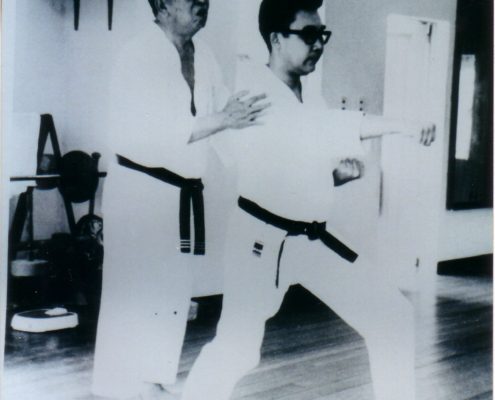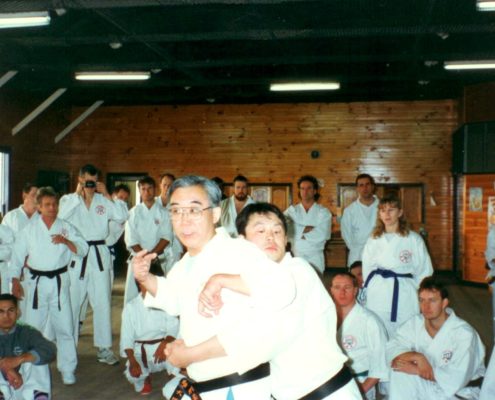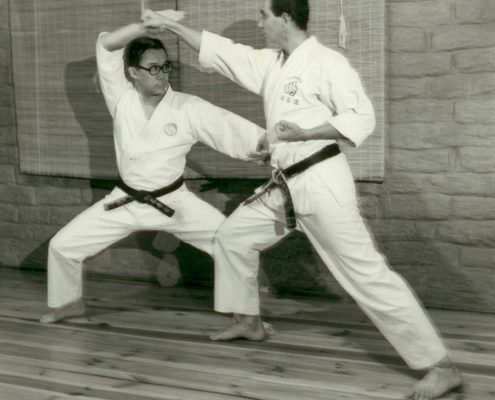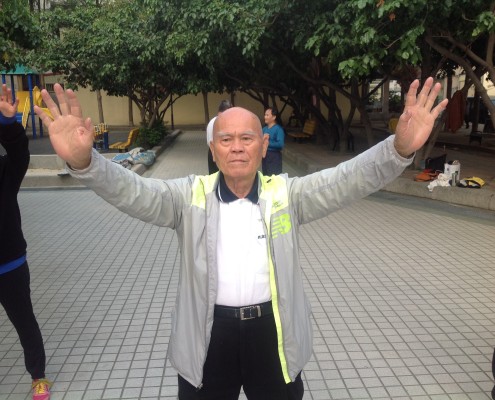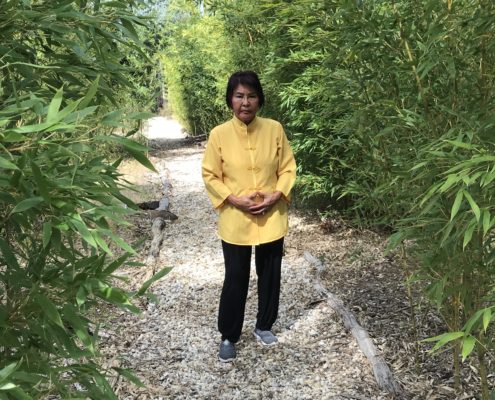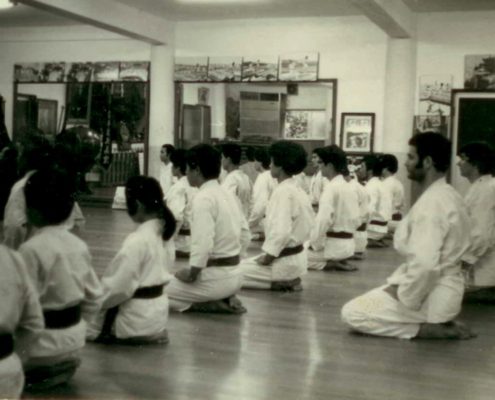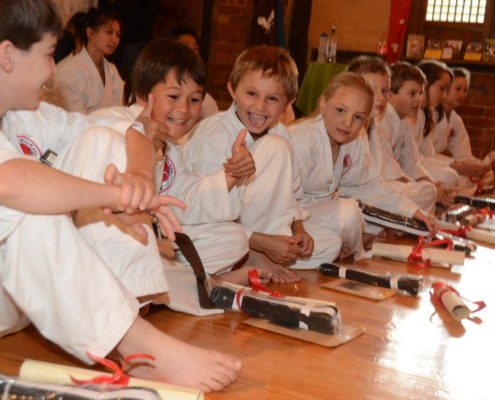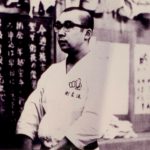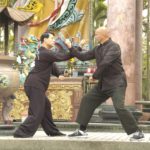Chen Yun Ching on His Father, Chen Pan Ling. Part 1
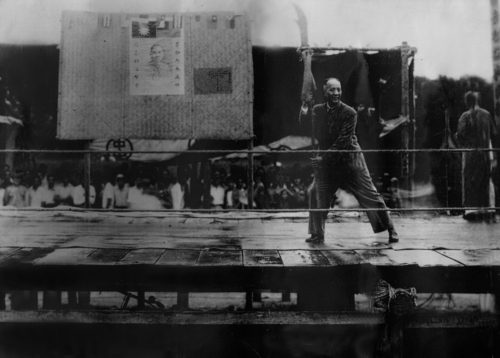
Chen Pan Ling demonstrating Kwan Dao (big sword) circa 1960.
The Chinese Martial Arts of Chen Pan Ling.
As people become more and more busy and distracted, they are turning to Chinese martial arts for health and relaxation. Although the martial arts are growing in popularity, it’s important to consider where your information comes from. There is a lot of misinformation going a
round, because what people don’t understand they sometimes simply make up. Real martial arts are still preserved in Chinese culture, and you don’t need to create things from your imagination if you have access to the authentic teachings.
My family has a history of practicing the martial arts. My grandfather lived in the country and oftentimes conflicts in the village grew contentious. He felt that he needed a way to protect his family. So he studied Shaolin Quan, and became skilled. My grandfather had four children, and my father, Chen Pan Ling, was number three. He began his martial arts study with his father and learned the complete Shaolin system. From ten years old on my father had a great love for martial arts, and soon began to seek out and explore other styles.
Because his desire to learn was sincere, my grandfather let my father follow his interest. Because the family was quite well off, they sent people out to find the best qualified teachers they could locate. Then my father would travel there and bow to the teacher. He would kow tow, which means you hit your forehead on the ground to prove that you are humble and sincere. This is how he became the disciple of a number of different masters. My grandfather paid them a lot of money to come to his house and teach his son. My father had a number of different teachers, not just one. He sought out the best and most famous of each style, and he learned Shaolin Quan, Xing Yi Quan, Tai Ji Quan and Ba Gua Zhang.
My father didn’t stop there though. He decided to go deeper in his investigation of the workings of the human body. He obtained his degree in mechanical and hydraulic engineering, and he used this to study movement. He wanted to understand deeply the mechanics of how human beings work. He was very much into human body function.
He also learned Tai Ji from all four of the main families, Yang, Wu, Hao and Chen. He took the best parts of each to make his 99 Pattern Tai Ji form. That’s the one that we still practice today. The form was created in Nanking, and he was the chairman of the official committee that was responsible for compiling it.
In the old days looking for a teacher was not as easy as it is today. Now, you simply buy him an airplane ticket and pay him to come and teach you. But before, a teacher was responsible for doing a lot of background research on each student he took on. Investigating your personality, your background, who your father was, and so on. If he didn’t think you had the right background he couldn’t take you as a student.
In China Chen Pan Ling still gets a lot of respect, even though it’s been so many years since he died. People still have his picture; they still talk about him and still remember him because he used all his energy, and all his knowledge to improve the standard of practice in the martial arts. He contributed a lot to the government’s promotion of the arts, as well as for private use. He would teach anybody, rich or poor. He didn’t charge money, he would teach anyone who was interested in training. He really worked hard to promote martial arts as well as the spiritual aspects of the arts, so the people never forgot him.
When he came to Taiwan he did the same thing. He had the help of Chiang Kai Shek, who was his close friend and adopted brother. My father used all his energy to get a school going and promote the martial arts here. He also wrote another educational book, that the military still uses to this day.
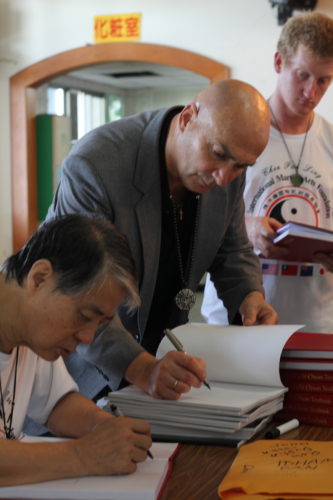
Chen Yun Ching and James Sumarac signing English translations of Chen Pan Ling’s texts.
Transformation Within the Martial Arts.
Although I have studied martial arts for many years, I could never understand all that they have to teach. There are many aspects that are truly amazing and inspiring. I have spent a lot of time going deeply into what I was taught. One of the things that intrigue me most is how Chinese martial arts are so different from regular sports. With running and aerobics you expend so much energy that you can become deeply tired. Whereas in martial arts practice you bring energy back in as you train, so you are never worn out and end the session with more energy than you started.
For the young person, the practice often begins with a focus on the self-defense skills that are taught. Physical strength and flexibility are also emphasized and are important for many life activities. This forms the basis of martial arts skill. Later on one works on drawing the mind/body connection closer. These arts can be an exciting vehicle toward helping develop an awareness and appreciation for the spiritual dimension within mankind.
In martial arts we understand from Chinese Medicine that we are multi-dimensional beings. We have a mind, a body, and a spirit. This plays an important part in martial arts practice, with the eventual goal of transforming into a better person.
Martial arts and meditation have a very strong connection. Your personality will change if you practice martial arts for long enough. Because as you are practicing your character will become what you want it to be. People who practice only for a short time won’t change much. But when you train for a long time, you change a lot. When you combine your training with meditation the process is even more powerful. Even though you are just sitting and meditating, your mind is going over what you learned and what you did, and later on that will be become a part of your body’s inner knowledge.
This is like when you stare at something for a long time and you turn away. You will see a new scene, but what you looked at before remains in your vision, it sticks with you. Practicing meditation will serve to help you process and retain what you learn in martial arts, and make connections between mind and body much quicker.
My father woke up every morning at five o’clock to meditate. He also meditated before training and afterward as well. He would get up, sit on the bed and do nothing for forty minutes. He felt that when you train martial arts you’ve got to clear your mind. Doing Tai Ji is the same, when you train Tai Ji Chuan you must try to get your mind clear. Don’t worry about the checks you’ve written or the money you need to pay your bills. By clearing your mind you will get a lot of benefit.
The integration of meditation, qi gong and martial arts will vary depending on the system and the teacher. I believe it to be an integral part of training because meditation calms the mind and allows us to cope with the hardships we will all face sometime, or in some cases, each day. It also facilitates an intuitive response to difficult situations, which is of paramount importance to martial artists. The internal styles all contain their own unique methods of qi gong practice to cultivate the qi, which reestablish the integrity and functional order of the body’s energy systems. Without this element, the martial arts are useless.
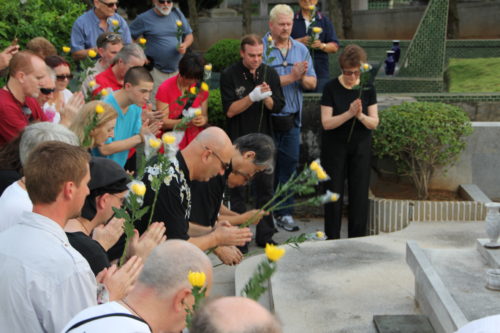
Chen Yun Ching, James Sumarac and Chinese Martial Arts aficionados at the tomb of Chen Pan Ling in Taiwan.
Hard and Soft Meet.
The Wai Jia and the Nei Jia both need to be practiced. You need a balance, because the external practices are faster and have more action. But you need control too, and internal methods are more involved with developing the mind and the qi. But in the end the hard has to meet the soft and the soft must come together with the hard. They have to mix together.
There are differences of appearance and performance, but in the end both ways should achieve the same result. Ultimately, external training should become internal in the long run, and the internal styles may incorporate the external with the use of relaxed power like Fa Jing. Traditionally in China, Shaolin and similar arts that are considered external are taught to younger people to develop obvious strength, flexibility and fighting skills quickly. There arts emphasize hardness, strength and speed to achieve martial skill and tend to be more offensive.
Internal arts such as Tai Ji Chuan, Ba Gua Zhang and Xing Yi Quan use slower, softer and more balanced movements, usually with a defensive mindset. These systems are not restricted to young people and are practiced by people of all ages, both men and women equally.
In China there is a saying that a balloon that rises swiftly should descend slowly. This means that the young person studies hard in Shaolin and learns quickly. As they get older they move into the softer arts, and they continue to cultivate power as they get older. Therefore, even though their balloon rises quickly, so to speak, they stay in shape and continue to improve themselves so that they don’t lose their strength in old age.
In the traditional way I learned Shaolin gung fu first, and after that I started to do the other Arts. Shaolin is the basis for Chinese martial arts, it is the foundation of gong fu. Look at Tai Ji, all of it’s stances are taken from Shaolin Quan, such as Ma Bu, Gong Bu and so on. Even Tai Ji Quan’s founder Zhang San Feng came out of Shaolin Temple.
Translated by Shou Mei Sumarac. Written by James Sumarac.
An excerpt from Nei Jia Quan Internal Martial Arts Edited by Jess O’Brien.
 Cart
Cart